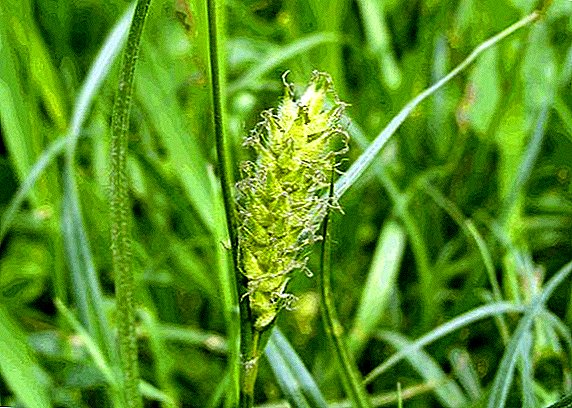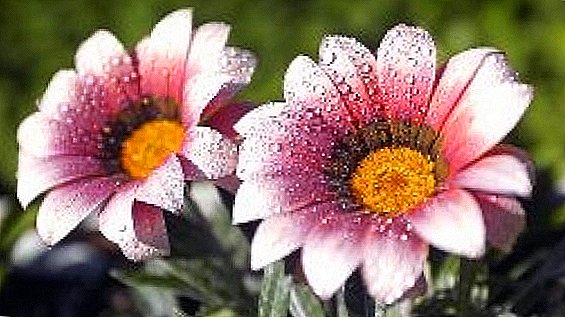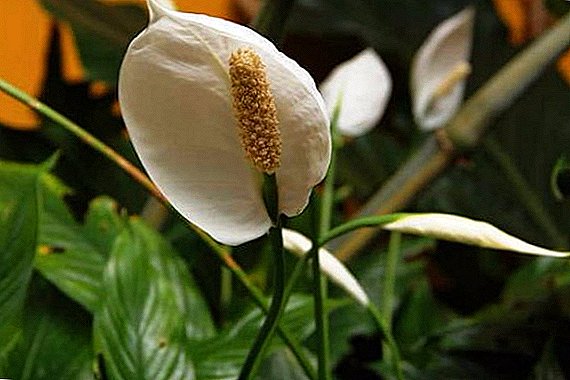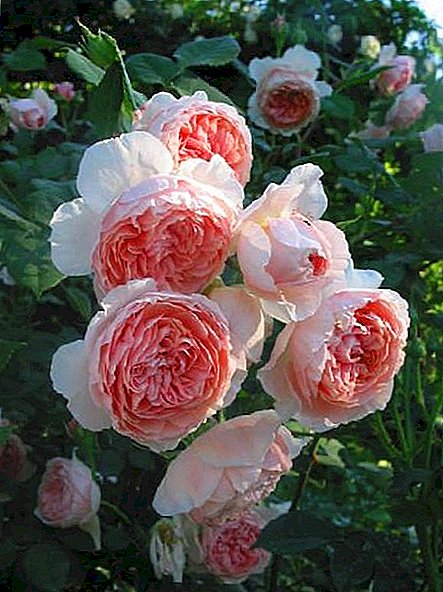 When flower growers think - they say, and not to wipe us at our William - they immediately have a dilemma. For the famous English breeder David Austin brought two almost equal varieties, one of which is named after William Shakespeare, and the other - another William, but Morris. Those who opt for the latter, not lost, because it is extremely remarkable plant, has a number of undeniable advantages.
When flower growers think - they say, and not to wipe us at our William - they immediately have a dilemma. For the famous English breeder David Austin brought two almost equal varieties, one of which is named after William Shakespeare, and the other - another William, but Morris. Those who opt for the latter, not lost, because it is extremely remarkable plant, has a number of undeniable advantages.
Varietal description
The breeder David Austin, specializing in the cultivation of new varieties of roses, which, leading from ancient English varieties, would meet modern requirements, in 1998 received a kind of plant. He named him the name of the famous English poet, artist and designer of the XIX century, William (William) Morris.
And the rose, indeed, turned out wonderful. A powerful bush, reaching a height of one and a half, or even two meters, with spreading branches, elegant matte leaves and gorgeous flowers is able to occupy a dominant position in any flower garden.
Did you know? Rose oil is more expensive than platinum and gold. To produce just one liter of this oil, it is necessary to collect three tons of rose petals.Therefore, it is usually planted in the background or near the garden pavilions or gazebos.
 The bush grows quickly, winter-hardy, resistant to diseases, well withstand long rains. However, in order not to suffer from gusts of wind, it requires a garter of branches.
The bush grows quickly, winter-hardy, resistant to diseases, well withstand long rains. However, in order not to suffer from gusts of wind, it requires a garter of branches.Rose varieties "Graham Thomas", "Mary Rose", "William Shakespeare", "Benjamin Britten" and "Falstaff" were also bred by the famous English breeder David Austin.
The main wealth of this plant, of course, flowers. They are large - about 10 cm in diameter, consist of many petals, the number of which exceeds forty on average, and can reach hundreds of pieces.
Petals in the center of the flower of a delicate apricot-pink color scheme, which goes to the edge almost white. Flowers exude a strong and extremely pleasant aroma, which is dominated by notes of tea smell. Connoisseurs say that this variety, among other English ones, has a fragrance of flowers among the best. 
Landing
- You can plant a plant in the spring, before the buds begin to bloom, or in the fall, after the end of flowering.
- The place should be chosen in such a way that the sun's rays should fall on the plant a maximum of five hours a day, since this rose does not tolerate an abundance of sunlight.
- For planting it is necessary to dig a hole half a meter in length, width and height.
- A little fertile garden soil should be mixed in equal proportions with humus and poured into a pit, then pour a bucket of water there and wait at least twenty hours.
- Immediately before planting it is useful to dip the roots of the seedling in a solution that stimulates growth.
- It is necessary to plant a bush in such a way that, firstly, the roots are placed in the dug hole completely, without bending up, and, secondly, the graft site on the seedling should be at a depth of at least 7 cm.
- Planted plants should be watered abundantly until complete saturation of the soil with moisture. After a couple of days watering should be repeated.
Video: features of planting roses
Priming
Experts recommend choosing a plant for planting a place where other roses did not grow before. If this is not possible, then the ground should be completely changed to a depth of at least half a meter. When planting, it is desirable to use rotted horse manure as fertilizer, which does not absorb nitrogen.
If the soil is too light, it is worth adding clay to help retain water.
You will probably be interested in reading about how to grow a rose from a bouquet, how to keep roses in a vase for a long time, how to plant rose seedlings from a box, and what mistakes gardeners make most mistakes when growing roses.
Location
In addition to choosing a not very sunny place to plant, one should also think that these roses belong to the climbing variety and can reach a height of up to one and a half to two meters. That is, their thick and tall bushes have increased windage and can suffer from strong gusts of wind.  Therefore, they are usually chosen places that partly protect the plant from drafts and, in addition, allow you to tie up long branches. This may be a place near the fence, veranda or gazebo.
Therefore, they are usually chosen places that partly protect the plant from drafts and, in addition, allow you to tie up long branches. This may be a place near the fence, veranda or gazebo.
It is also important that these flowers do not tolerate flooding in the spring with melt water and prefer that in winter the ground around them be covered with snow. Therefore, again, it is useful to plant them near the buildings, as well as near the fence.
We recommend reading about the benefits of roses for human health, as well as how to dry roses and what can be done with them.
Watering
This variety of English roses, despite the fact that its homeland is accustomed to rain, is not very picky about soil moisture. Therefore, the plant should be watered only when the top layer of soil dries three centimeters deep.
In the optimal evening under the adult climbing grade you need to pour up to 15 liters of water. Younger plants require, respectively, several smaller volumes. 
Care
Caring for this variety, which consists in feeding, pruning branches and preparing for winter, is not very complicated, but still requires compliance with some specific rules.
Top dressing
In the second year after the rose was planted, she already needs fertilizing from fertilizers. The operation is carried out in several stages:
- First, the plant is saturated with nitrogen-containing substances that stimulate the emergence of fresh shoots.
- When buds begin to develop on the bush, phosphate fertilizers are added to nitrogen fertilizers.
- With the onset of autumn, the plant is transferred to the potash "diet", which will allow it to survive the winter cold without loss.
Beginner gardeners will be useful to read about how to fertilize roses, what are the main diseases of roses and how to treat them, what are the differences between roses and rosehips, as well as how to choose a covering material for roses.
Pruning
Surgery to remove from the bush all the excess is carried out in the spring and autumn. First of all, all dried up, overly thin, frail and obviously unviable shoots and branches are eliminated.  And then the tactic of putting the rest in order is determined. In the case of the rose "William Morris", which belongs to the climbing varieties, shoots are usually shortened to one fifth of their original length.
And then the tactic of putting the rest in order is determined. In the case of the rose "William Morris", which belongs to the climbing varieties, shoots are usually shortened to one fifth of their original length.
Important! After pruning, experts recommend be sure to feed the plant with complex fertilizers.
Wintering
Although the rose "William Morris" is considered winter-hardy and is not afraid of cold to -10 ° C, in our area, where rarely, but still much stronger frost occurs, this plant needs more serious preparation for winter than at home.
Such varieties of roses as Bonica, Pierre de Ronsard, Chopin also belong to frost resistance.Conducting proper and regular feeding, mobilizing the protective forces of the plant, is in itself a successful preparation for winter. However, in order for the rose to survive the hard frost without loss, more effective measures are needed.
Video: pruning and sheltering roses for the winter
But first you should give the plant to finish its summer affairs. That is, the remaining flowers should independently finish blooming on the branches and then fall to the ground, and not be picked by a person. This helps the shoots to ripen to the maximum.
Then the bush should be well spud. Since this rose is a climbing grade, its branches, although shortened to a fifth of its length after pruning, still remained long.
Discover the varieties and nuances of growing Dutch, Canadian and English roses.
They should be laid on the ground, pinned and covered with a layer of thirty centimeters in leaves, and covered with a non-woven garden material or film on top. In the spring, insulation can be removed when the temperature is around 0 ° C.
Important! Until the stable frosts come below the ten-degree mark, you should not cover the roses.

Diseases
This variety of roses is famous for its resistance to all kinds of diseases, including the often affecting this type of plant powdery mildew and spotting.
Did you know? William Shakespeare was not indifferent to this flower. In his plays and sonnets, he mentions the rose more than fifty times. And the great playwright himself was also mentioned in the answer in the list of English roses, one variety of which bears his name.
Outstanding English artist and designer William Morris, who often used images of rose flowers when designing wallpaper and interior design, would certainly with great pleasure immortalize the image of the rose bearing his name. But today the rose itself glorifies him. For such a beautiful plant can only be named after a glorious man.












